Cherry Blossoms 2010: Kyoto Report (4/4)
by japan-guide.com
This is the official japan-guide.com cherry blossom report for 2010. Please visit also our guide to cherry blossoms for more general information about cherry blossoms and this year's forecasts and our schedule of upcoming reports.
| previous post |
| next post |
2010/04/04 - Kyoto Report
by schauwecker
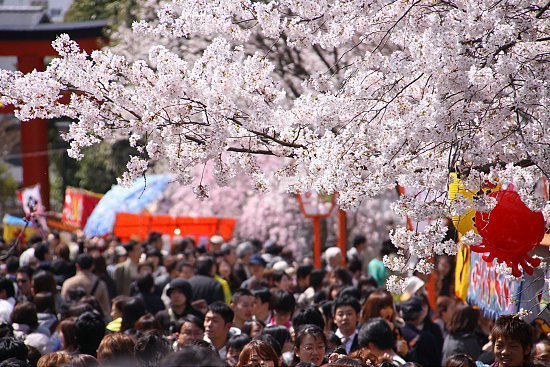
Warm and sunny weather has caused cherry trees to burst into full bloom in many cities across Honshu yesterday, including in Kyoto, where I check out Nijo Castle, Kyoto Botanical Garden, Gion Shirakawa, Maruyama Park, Okazaki Canal and Heian Shrine today.
It was another beautiful day, perfect for cherry blossom viewing, and Kyoto was extremely busy. Hotels for Saturday had been booked out citywide for weeks, and a lot of patience was necessary when using the city's public transportation system, which is inadequate for a city of the size of Kyoto even on regular days and especially so on busy days like today.
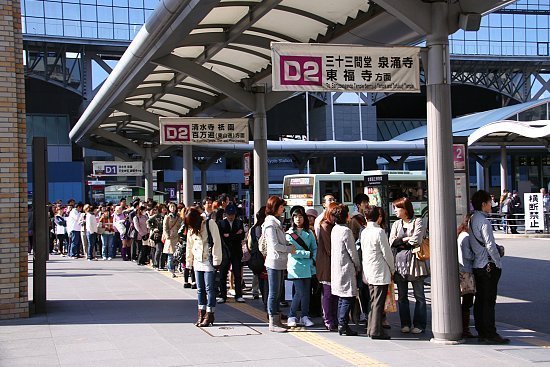
To prevent getting stuck in packed buses in traffic jams, I adhered to my principle of using rail bound transportation whenever possible, as trains and subways are faster, more reliable and easier to use than buses. Although the subway was as packed as the Yamanote Line during rush hours between Kyoto and Karasuma-Oike Stations, it got me around the city relatively efficiently.
Nijo Castle
April 4, 2010 - from "still closed" to "beyond the peak" and everything in between
I started with a visit to Nijo Castle (Nijojo), the former Kyoto residence of the Tokugawa shogun, where a wide range of cherry tree varieties are planted around the spacious castle grounds. Because different types of trees bloom at different times, cherry blossoms can be enjoyed during most of March and April at Nijojo. Yet, because at any time there are always some trees out of bloom, the overall experience may not be as overwhelming as in hanami spots where all the trees bloom at the same time.
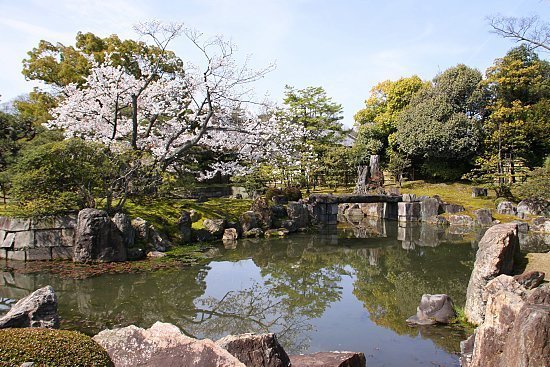
Today, the somei yoshino trees around the northeastern corner of the castle grounds were at full bloom and most spectacular, together with some weeping cherry trees that were at or approaching full bloom.
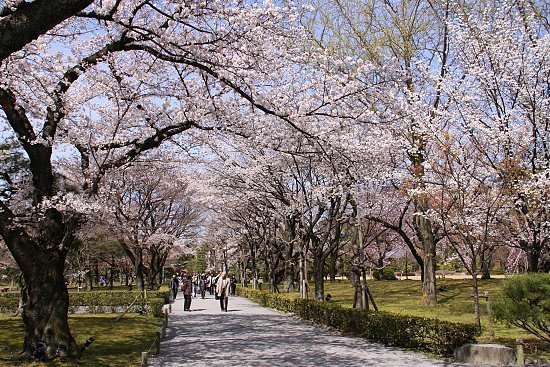
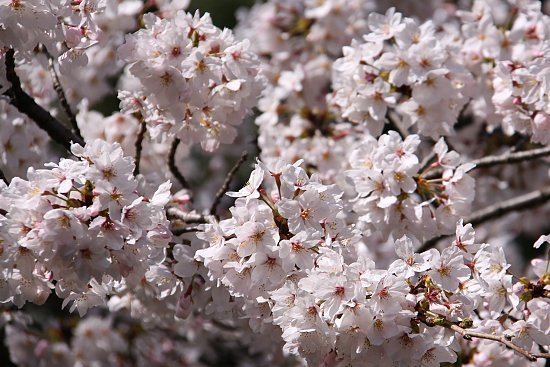
Nijojo is also famous for its many late blooming cherry trees, so called yaezakura (or satozakura). Yaezakura are cultivated cherry tree varieties with blossoms of more than five petals. Many yaezakura trees at Nijojo were still closed today or had only just started opening their blossoms.
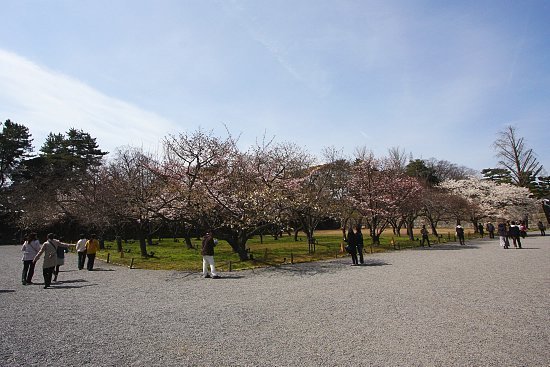
While single blossoms of yaezakura trees are particularly pretty to look at from a close distance, the trees as a whole appear less intense than earlier blooming trees, because their leaves develop at the same time as their blossoms (instead of after them), giving the trees a less homogeneous overall look.
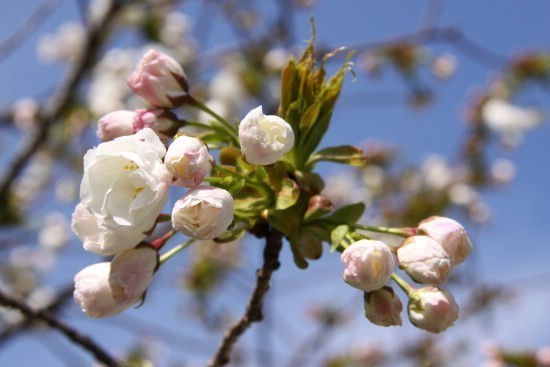
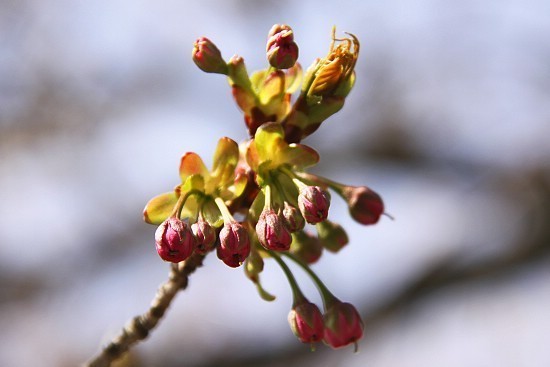
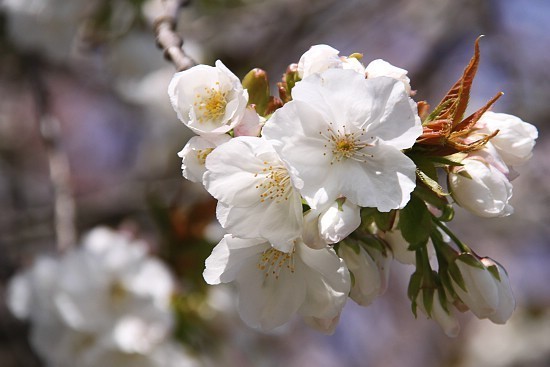
Kyoto Botanical Garden
April 4, 2010 - full bloom
My next stop was Kyoto Botanical Garden, located halfway between the Shimo and Kamo Shrines just next to Kitayama Station on the Karasuma Subway Line. Besides a lot of other flowers, bushes and trees, the garden contains a beautiful small forest of weeping cherry trees and somei yoshino.
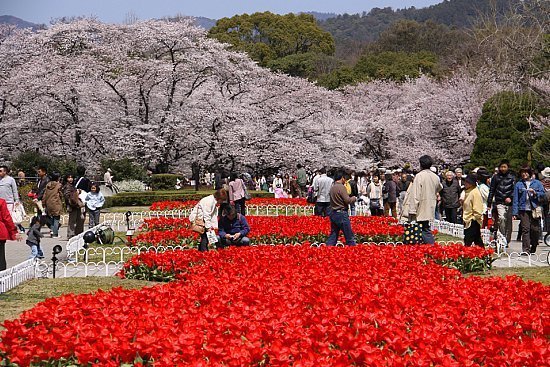
The somei yoshino and the shidarezakura (weeping cherry trees with five brightly pink petals) were at full bloom, providing a spectacular sight, while the shidareyaezakura (weeping cherry trees with more than five dark pink petals) had only opened around 60 percent of their blossoms so far.
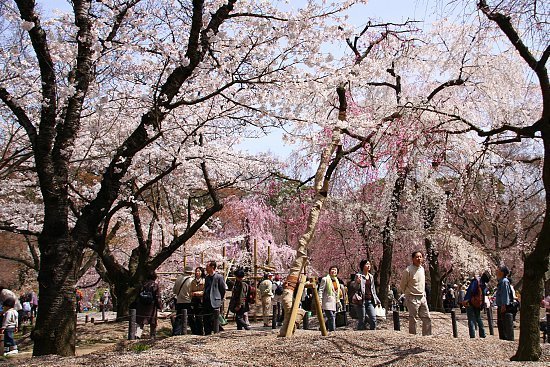
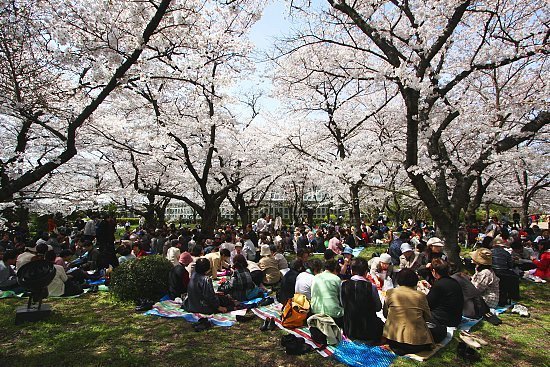
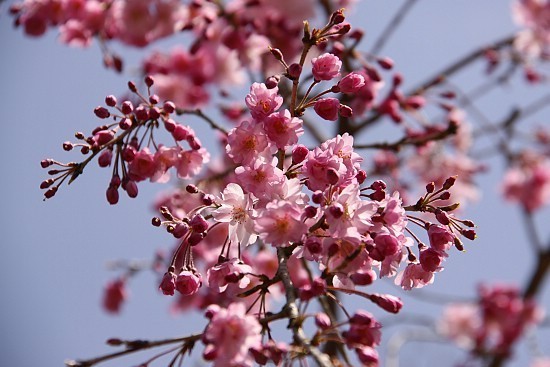
Another highlight was the majestic weeping cherry tree next to the large lawn area in the center of the garden, which happens to be the niece of the large weeping cherry tree in Maruyama Park (see report further down the page). The tree stood in full bloom and looked spectacular.
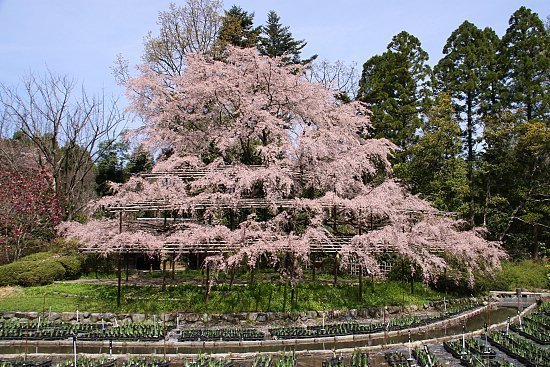
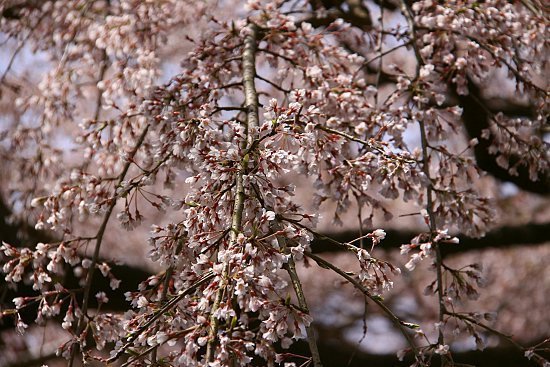
Gion Shirakawa
April 4, 2010 - full bloom
A few dozen cherry trees line the pretty Shirakawa Canal which flows through the Gion district north of Shijo Avenue. The trees were at full bloom and attracted a lot of viewers. Note that if you follow the willow lined canal upstream for about a kilometer, you will eventually arrive at the Okazaki Canal, another popular hanami spot (see report further down the page) near Heian Shrine.
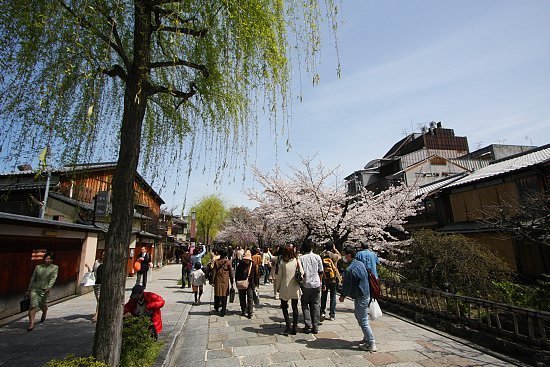
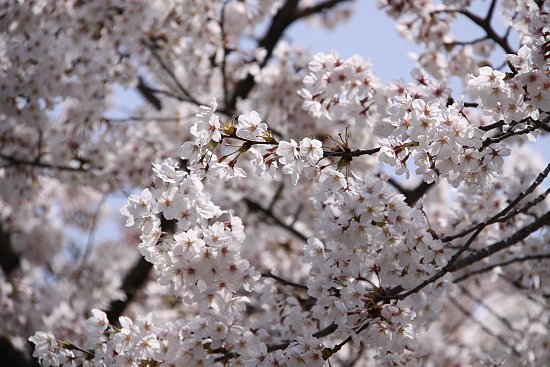
Maruyama Park
April 4, 2010 - full bloom
But instead of following the canal, I made a small detour via Maruyama Park, Kyoto's most lively cherry blossom spot. The trees there were at full bloom, including the large weeping cherry tree in the center of the park, which, despite its fragile health, looked spectacular today (when viewed from the right angle).
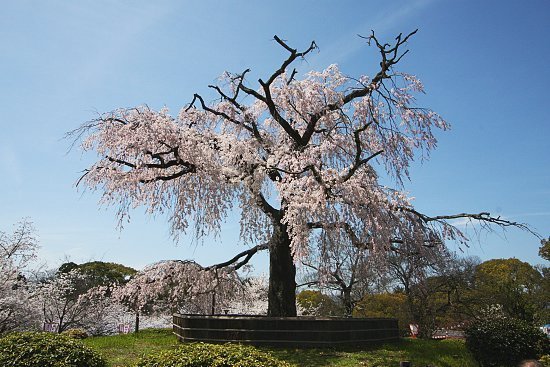
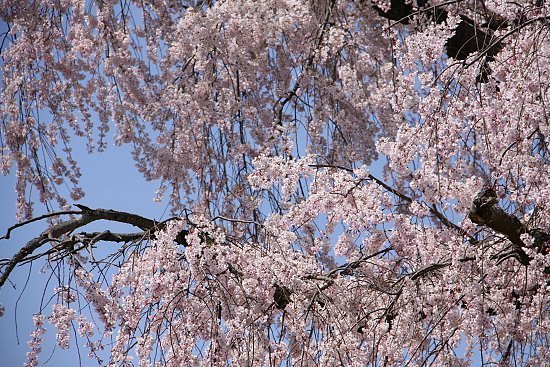
Not surprisingly, the park was extremely busy, all picnic spots had been long taken, and the temporary constructed restaurants were busy serving many hungry and thirsty blossom viewers. The park's popularity seemed to have brought car traffic around it to a virtual standstill.
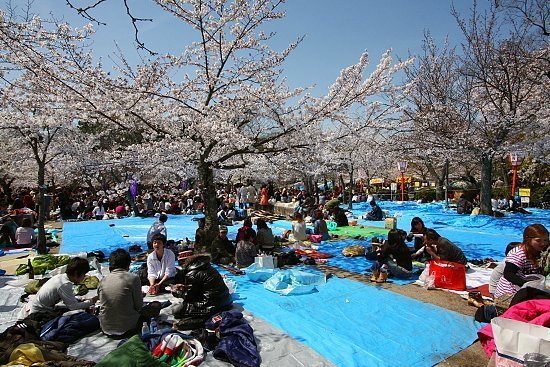
The cherry blossoms should remain spectacular for several days to come.
Okazaki Canal
April 4, 2010 - full bloom
Full bloom has also been reached along Okazaki Canal just outside Heian Shrine.
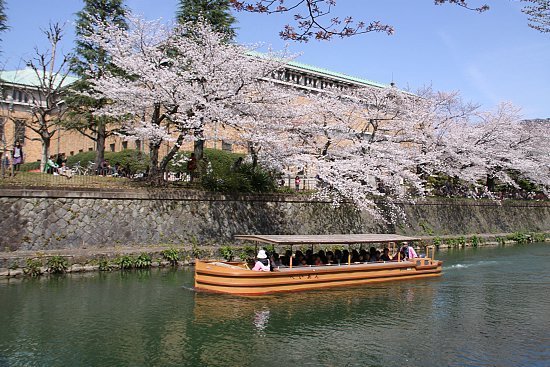
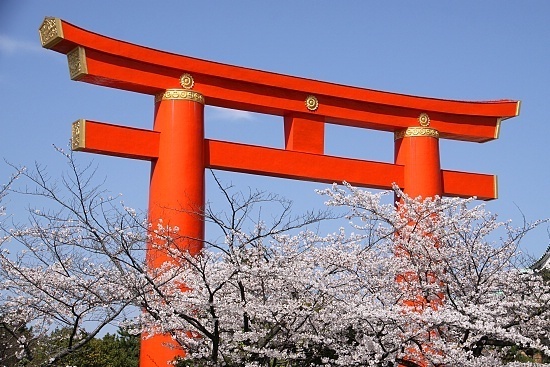
Heian Shrine
April 4, 2010 - approaching full bloom (50-80%)
By popular request, I included a visit to Heian Shrine into today's reporting trip. The garden behind the shrine's main buildings is one of the most attractive places in Kyoto to see weeping cherry trees. It features dozens of them, especially the dark pink shidareyaezakura variety, which follows a slightly later schedule than the somei yoshino.
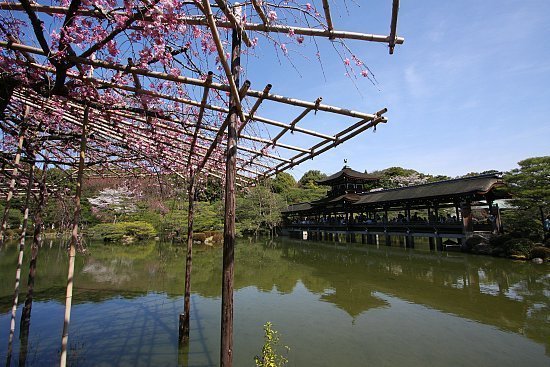
Indeed, many weeping cherry trees in the garden had only about half of their blossoms open today and it is probably going to take another two or three days of warm weather until full bloom.
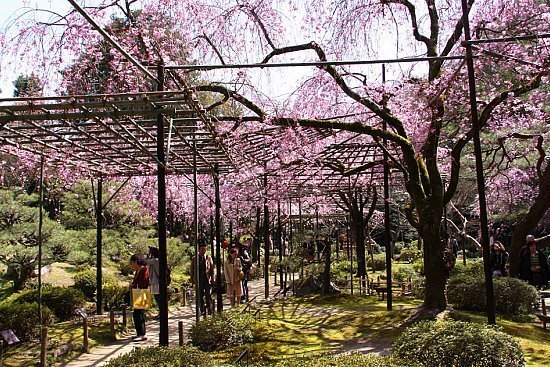
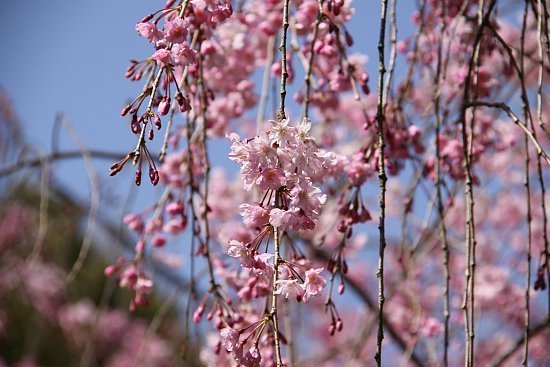
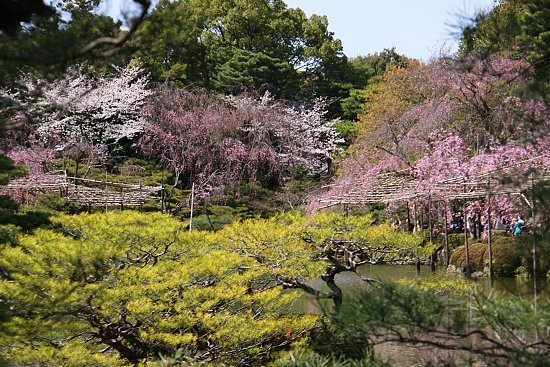
| previous post |
| next post |
|
List of Posts:
2010/05/14 - Hakodate Report 2010/05/13 - Matsumae Report 2010/05/06 - Kakunodate Report 2010/05/05 - Hirosaki Report 2010/04/25 - Takizakura Report 2010/03/30 - Nagoya Report |
Questions? Ask in our forum.